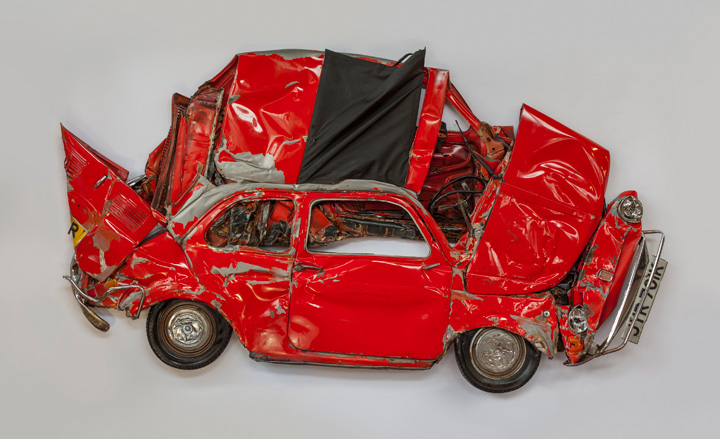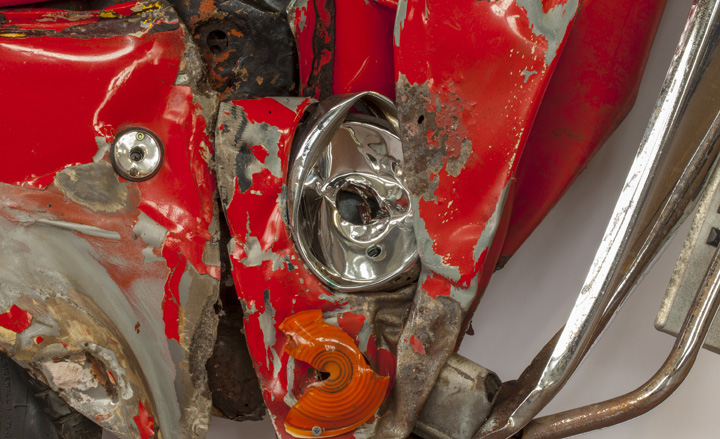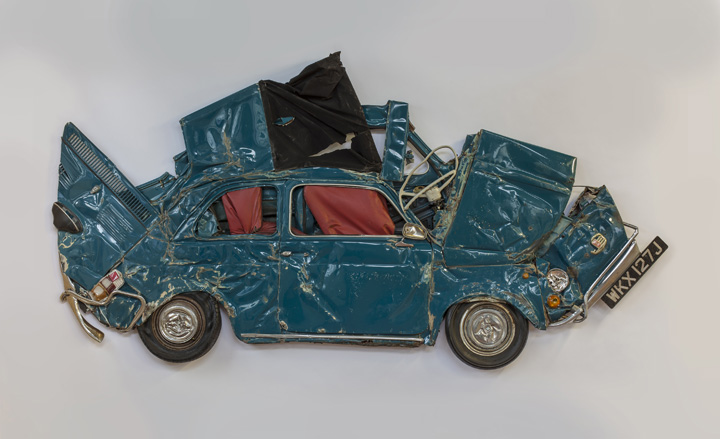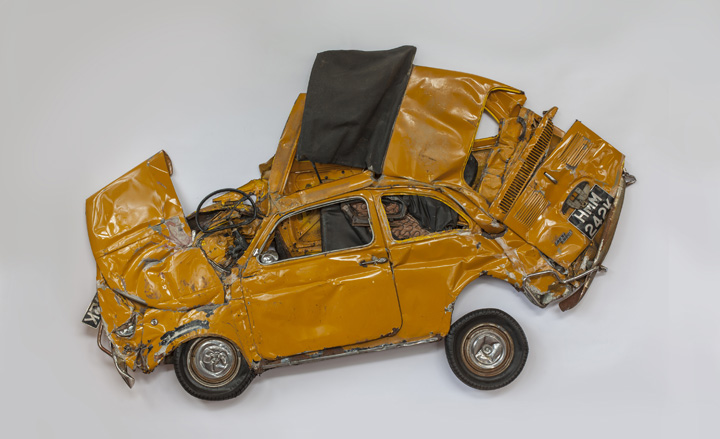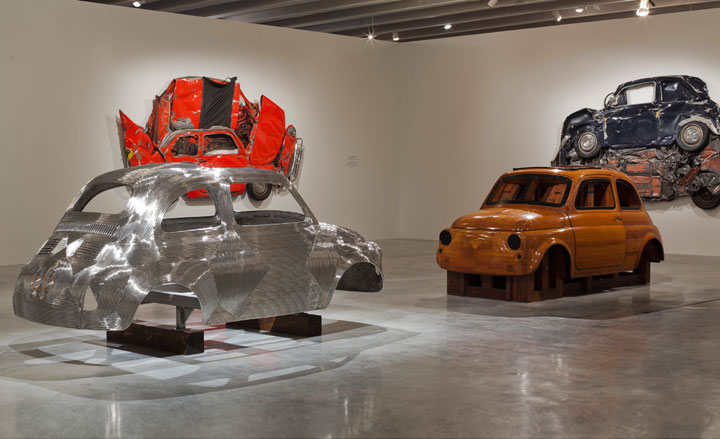INHALE is a cultural platform where artists are presented, where great projects are given credit and readers find inspiration. Think about Inhale as if it were a map: we can help you discover which are the must-see events all over the world, what is happening now in the artistic and cultural world as well as guide you through the latest designers’ products. Inhale interconnects domains that you are interested in, so that you will know all the events, places, galleries, studios that are a must-see. We have a 360 degree overview on art and culture and a passion to share.

Fresh from his voyage to Venice aboard the ‘Last Train’, Ron Arad has arrived in Israel with a fleet of Fiats in tow – albeit squashed ones. The artist-cum-designer, who has forged a career out of cutting, welding and bashing metal, has installed six compressed Fiat 500s in the Design Museum Holon, his largest steel creation to date.
Inside the Corten steel-swathed building in the new cultural hub that is Holon (home to a slew of design galleries), visitors will find the cars splayed out like paintings on the walls. ‘I used to bash metal to make things useful, or useable,’ says Arad, who has created chairs for the likes of Vitra and Moroso. ‘Here we’re doing the reverse.’
The Fiats may read like cartoon cars that have met a nasty fate, yet their surprisingly perfect forms are the result of rigorous experimentation into the way automobiles behave under compression, which began with toy cars in his studio. Achieving the same flattening effect on a larger scale proved tricky – one poor Fiat was even pounded by a digger – yet Arad wanted to go further than the crushed car sculptures by César Baldaccini and John Chamberlainin the 1960s. ‘Their work stopped being about cars,’ says the Tel Aviv-born but London-based artist. ‘They used cars as a source of raw materials to make sculptures out of. The idea here is to allow them to stay cars, yet show them from a new perspective.’
A 500-tonne press capable of an almost instantaneous crush was found in the Netherlands. And a degree of accident was key. ‘It’s always nice to see things happen in front of you that you are not totally in charge of, that are not exactly the fulfilment of your blueprint,’ Arad explains. The pressed cars were then shipped over to Italy for some post-production, or ‘embalming’.
So why attack the Fiat 500? ‘The car is a national symbol for Italy and our generation, and it’s a very endearing vehicle. Everyone has stories about their first ever sex in a Fiat, or first kiss,’ says Arad. ‘We’re not destroying the cars, we’re immortalising them.’
The six ‘Pressed Flowers’, as they affectionately titled, are joined in the Design Museum Holon by a number of metal icons from his past, including the ‘Rocking Big Easy Chair’ (1991) and the ‘D-Sofa’ (1994). In fact, the show was first mooted as a survey, a notion to which Arad has always been averse, despite such shows at the Barbican and MoMA. The new works were a fairly recent introduction. ‘About nine months ago the script was entirely rewritten,’ says curator Lydia Yee, who also masterminded the Barbican show. ‘We decided upon a mini survey alongside a brand new body of work.’
‘In Reverse’ is actually a far more enlightening exhibition about his oeuvre than any survey could have been. For one thing, it has brought to light one of the first triggers for his fascination with metal. During Arad’s childhood in Tel Aviv, his father had a severe car crash while driving a Fiat Topolino (the model before the 500), which was made from a mix of wood and metal. The car was completely flattened yet his father survived. Says Arad: ‘I will never forget my father’s words to us. “Had my car not been made out of wood I wouldn’t be alive now”.’ Thus his interest in metal was born and the seeds for this show were sown.
This beautiful homage to the Fiat 500 was created by scanning the car, then dissecting the scan into slices to make the mould. The laser cut steel components are completely made by machine, but the only way they could be assembled into the final sculpture was ‘by amazing, genius, loving artisans who perform things that we can only sit back and wonder how they do it,’ says Arad. For a man who likes to crush cars, it’s a surprisingly poetic emblem for the relationship between artisan and computer. And it’s a piece in which visitors can’t help but wish they could drive away.
via wallpaper.com



